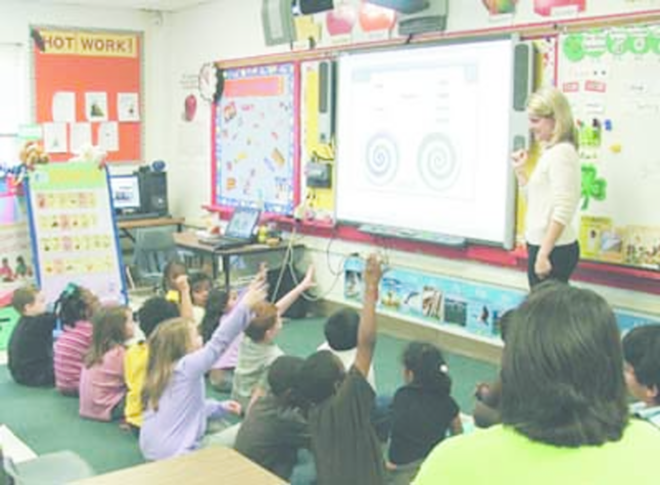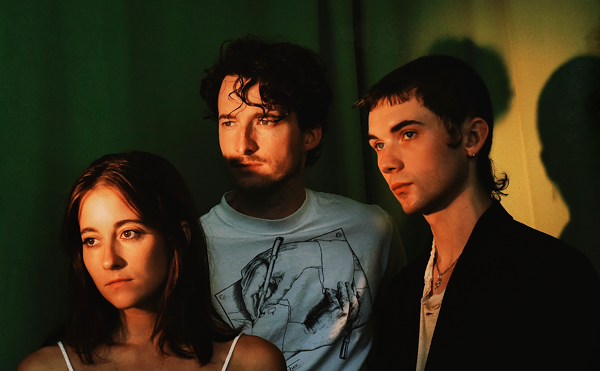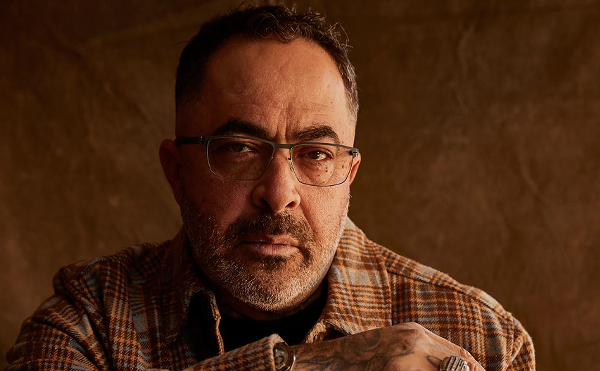
The best civic ideas in the United States converge on Tampa Bay this week, but few people realize how rich a trove of public-private partnership programs will be highlighted over at the Marriott Waterside.
The National Civic League's 60th annual All-America City Award conference is the destination for the 30 communities (including Tampa itself) that are finalists for the honor. Tampa last won the award in 1990, when Sandy Freedman was mayor. She is now chairwoman of the National Civic League.
This isn't mere bureaucratic log-rolling and back-slapping. For these cities and those citizens involved in the various projects, it is a chance to revel in their achievements.
"It is celebrating what has been accomplished by working together," said Shannon Edge, Tampa's neighborhood liaison, who has been involved with the three projects Tampa is presenting to the judges. "Our theme is 'the power of one' — all these groups working together. What I've noticed with the three delegations, regardless of whether we win next week, they are ecstatic to have this confirmation of their hard work, to even be a finalist. This is such an acknowledgment of all their work."
The Tampa delegation is almost 100 strong, from all age groups, "even an infant," Edge said. The Middleton High School drum line will perform as part of the city's presentation at the conference.
Tampa nominated three projects that have helped make life better, including its $21 million redevelopment of neighborhoods in the lower-income area of the city. Mayor Pam Iorio began her East Tampa initiative in 2003, and Operation Commitment there has goals including "rooting out crime, prostitution, drugs and code violations," the city's project nomination said.
The other two projects are the long-delayed widening of 40th Street through the efforts of the FIX 40th STREET NOW! Citizen Task Force and the Annual Sulphur Springs Children's Holiday Event.
Here are some of the most interesting (and in many cases, applicable to Tampa Bay) projects that will be presented during a day and a half of judging.
Albany, N.Y.
"Living History": Half Moon Replica Ship & New Netherland Museum
What it did: Albany drew upon a key episode from its 400-year history — explorer Henry Hudson's voyage to its shores aboard The Half Moon — to teach state history lessons for local schoolchildren. A replica of the boat, built in 1989, is a working sailing vessel that piques students' interest.
Why we like it: Come on, you need a reason to like a replica of a 400-year-old sailing ship? We love the idea of using a tangible piece of history that kids can get excited about to lock them into learning. At least twice a year, 12 middle-school students "man the ship" on a voyage from Lower New York Harbor to Albany.
Phoenix, Ariz.
Urban Higher Education
What it did: Phoenix invested nearly $500 million in higher education facilities in its downtown core, and the result was "life-altering drug discoveries, collaboration between high school students and international bioscience leaders, and a new, vibrant, urban university campus." That included creating the Phoenix Biomedical Campus and the Arizona State University Downtown Campus.
Why we like it: Students create vitality, and research creates jobs. In Phoenix, that translates to 26,000 new jobs, 18,000 students and a $2.6 billion estimated annual economic impact. You have to wonder, how can Tampa (Stetson Law School) and St. Petersburg (University of South Florida) better leverage their downtown higher education?
Fort Smith, Ark.
Meals for Kids
What it did: The Community Services Clearinghouse shares info with local churches, civic groups and other agencies about needs in Fort Smith, and it created Meals for Kids, which puts nutrional meals and nonperishable food into 2,400 public schoolchildren's backpacks every Friday. Volunteers fill the backpacks, and dieticians plan the meals to be healthy and balanced.
Why we like it: No applications are needed, just a recommendation from a child's school. And sending good food home helps lower-income families and builds a better tradition of eating healthy that saves communities money in the long run.
Carbondale, Ill.
Varsity Center for the Arts
What it did: In a familiar storyline, the city's historic Varsity Theater gave up the ghost as a working movie house. The community consensus was to turn it into a center for the arts, but its owner was skeptical. Then, in 2005, the city's Jackson Stage Company lost its home, giving the city an opportunity to solve two problems in one project. A fundraising campaign made it possible.
Why we like it: The creative re-use of old, vacant buildings as arts facilities is a time-proven method of revitalizing a neighborhood and boosting property values. Unfortunately, it is one that Tampa Bay hasn't much used, as we reported years ago about the north end of downtown Tampa's Franklin Street. Carbondale apparently overcame a reluctant landlord; we should, too.
Clinton, N.C.
Teaching with Technology: Interactive Whiteboards
What it did: The local school system collaborated with residents, businesses and nonprofits to place interactive whiteboards, the high-tech alternative to the blackboard, into each city classroom. In 2006, the whiteboards were put into five classrooms. One third-grade class that got the boards went from scoring an average 61 percent on end-of-grade tests to more than 90 percent.
Why we like it: Not only do interactive whiteboards allow schools to use software and Internet browsers on the boards and capture student responses and data, but the kids think they are cool as hell, so they pay attention in school better. How about a high-tech school initiative in Tampa Bay, led by some of our tech companies?
Windsor Heights, Iowa
Colby Park Playground
What it did: Aging and poorly planned, Colby Park is this Des Moines suburb's largest park, and it is highly visible from the interstate, so it needed a rehab. The first target was its playground, and armed with a foundation grant for equipment, the city staff worked with sixth and seventh graders to assist in the design of the new play area. The students' work so impressed the foundation that it increased its funding by 39 percent.
Why we like it: What a novel idea, asking the people who are going to use a facility what they think about its design. Just because those users are children is no reason to leave them out of the loop. And it is a teaching lesson that leaves younger residents with a sense of the importance of community service.
South Bend, Ind.
We Can! (Ways to Enhance Children's Activity and Nutrition)
What it did: As part of 14 pilot sites for a national nutrition program, South Bend sought to prevent obesity in children ages 8-13. It held six large community events that got 10,000 people involved and publicized the goal of better eating and great physical activity. The partnership involves fitness centers, summer day camps and the city's recreation centers. South Bend now mentors two other We Can! cities on how to implement the program and was one of the first three U.S. cities formally designated as a We Can! community.
Why we like it: Think about how Tampa Bay could get more fit: closing the Bayshore in Tampa once a month for community walks. Biking through downtown and Old Northeast in St. Petersburg along safe routes. Public awareness campaigns for youths about the importance of good nutrition, done by local celebs. Tampa Bay's Biggest Losers competitions. How about a weigh-off contest between the region's cities, with 100 residents from each city losing weight over a period of time? (The winner gets the rights to build a new home for the Tampa Bay Rays...)
Somerville, Mass.
Improved Communication
What it did: Somerville "has increased its focus on creating a transparent, inclusive form of municipal government for all community members" by adopting "SomerStat," a statistically driven process in which the public can engage city officials and staff about problems, needs and efficiency.
Why we like it: We're all about transparency, and frankly, we don't understand why local governments don't put all their top staff and elected officials' e-mails online for review. (They are public records, after all.) Using the CitiStat model of data-driven management tracking (developed in Baltimore, where it saved that city $13.2 million in excessive overtime costs and other wasteful spending) is a good idea, as long as the human interaction doesn't suffer or hide behind a bunch of numbers.
Des Moines, Iowa
Urban Revitalization Core West 18th St. to East 18th St.
What it did: Like just about every other U.S. city, Des Moines needed to revitalize its downtown. But it did so with a minimum of public investment, instead focusing on a mix of new and redevelopment projects that leveraged historic buildings, added new housing and implemented green initiatives.
Why we like it: Downtown redevelopment doesn't have to mean just adding skyscraper offices or tall condo towers. It means using what you have, keeping your historic character and getting greener. Make the scene cool, i.e. authentic, creative and affordable (like St. Petersburg did), and you have started your renaissance.
















